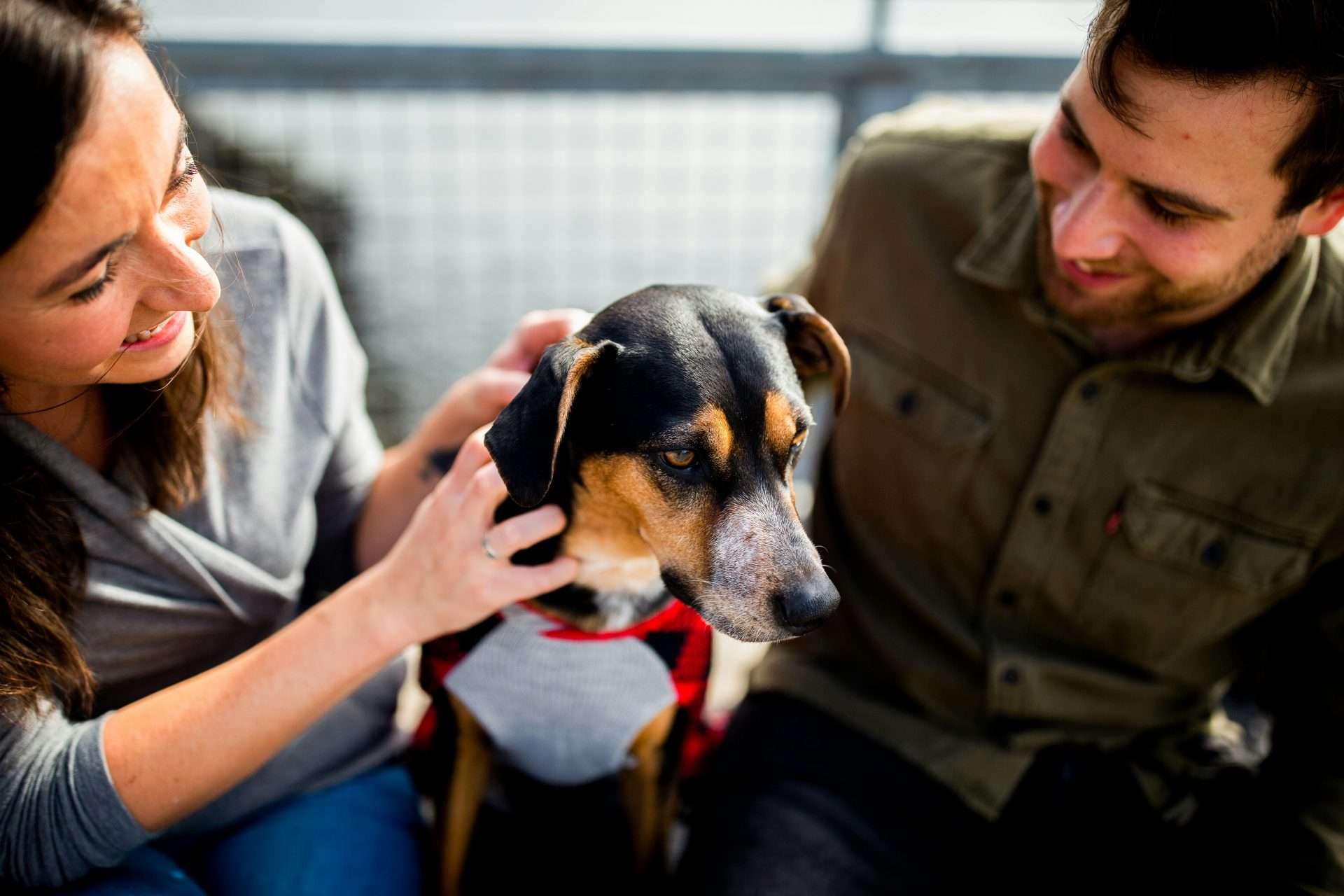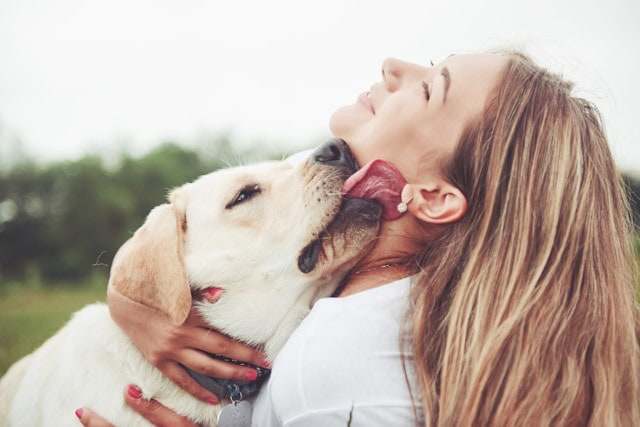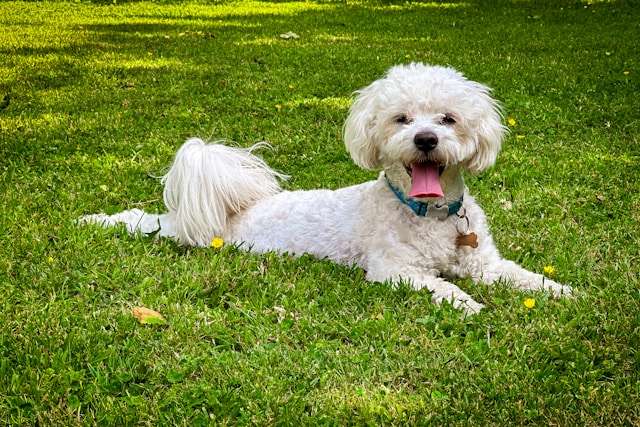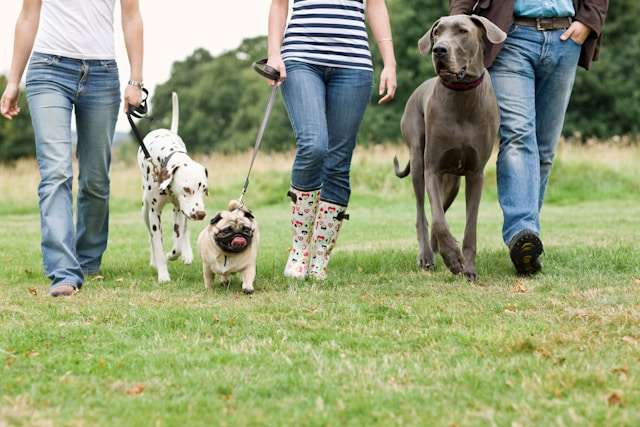Best Dogs for Autism: Top Breeds to Support and Comfort
What are the best dogs for autism? Let’s dive in and see what the research says.
Finding the perfect dog for a child or adult with autism can make a difference. Dogs provide unconditional love and companionship and can even help reduce stress and anxiety. Navigating the world with autism can be challenging, but a supportive, well-chosen dog can be a game-changer.
Certain dog breeds are especially well-suited for people with autism. For example, Golden Retrievers and Labradors are popular due to their friendly and patient nature. Another great option might be Newfoundland; they are intelligent, easy to train, and not very active, which is excellent for families who prefer indoor activities. These dogs are not just pets; they become family members who offer invaluable support.
From providing comfort to encouraging physical activity, dogs can remarkably impact the lives of individuals with autism. Choosing the right breed can enhance social skills, reduce anxiety, and create lasting bonds of friendship and love. Let’s explore some of the best dog breeds that stand out for their temperament, intelligence, and trainability.
Key Takeaways
- Dogs can significantly reduce stress and anxiety in people with autism.
- Golden Retrievers, Labradors, and Newfoundlands are top dog breeds for autism.
- Choosing the right dog breed can improve social skills and offer emotional support.
Table of Contents
Understanding Autism
Autism Spectrum Disorder (ASD) affects social interactions, communication, and behavior. Autistic individuals often face unique challenges, including difficulties maintaining eye contact and understanding social cues.
Autism Spectrum Disorder Explained
Autism Spectrum Disorder, or ASD, is a developmental disorder that impacts communication and behavior. “spectrum” refers to the wide range of symptoms and severity. While some individuals might need significant support in daily life, others may live independently.
ASD is often identified in early childhood. Common signs include difficulties with social interactions, challenges in making eye contact, repetitive behaviors, and highly focused interests. Diagnosing ASD involves developmental screenings and behavioral evaluations by healthcare professionals.
There is no cure for autism, but early intervention can improve outcomes. Behavioral therapies, speech therapy, and occupational therapy are standard support methods. Understanding does not change a person’s characteristics but helps create supportive environments.
Challenges Faced by Autistic Individuals
Autistic individuals often have unique difficulties. These challenges can vary widely from person to person and affect their daily lives and interactions.
Firstly, many autistic individuals have trouble with social skills and communication. This can include understanding sarcasm or non-verbal cues and difficulty starting or maintaining conversations. Eye contact may be uncomfortable or avoided.
Sensory sensitivities are also common. Certain sounds, lights, or textures can be overwhelming. This can lead to stress or even self-harm in some cases as a way to manage anxiety or discomfort.
Daily routines and changes can be another significant challenge. Autistic children and adults might prefer consistent routines and may experience distress when unexpected changes occur.
Addressing these challenges often involves tailored support and understanding from family, friends, and professionals. By creating autism-friendly environments, we can help reduce stress and improve the quality of life for autistic individuals.
Benefits of Dogs in Autism
Dogs can provide various benefits for individuals with autism, from offering emotional comfort to improving communication skills and helping establish a routine.
Emotional Support and Bonding
Dogs are fantastic for providing comfort and emotional support. Their presence alone can create a sense of security. For kids and adults with autism, a dog’s companionship can reduce feelings of loneliness and stress.

Golden Retreiver
Imagine how an affectionate Golden Retriever or a gentle Newfoundland can become a calming presence when things get overwhelming. These dogs offer unconditional love and friendship, making coping with anxiety or emotional turmoil easier.
Plus, petting a dog releases oxytocin, a hormone that promotes bonding and can help alleviate feelings of inadequacy or isolation.
Promoting Social and Communication Skills
Dogs can be excellent social catalysts. One of their superpowers is encouraging interactions and improving social and communication skills. Verbal communication can be challenging for many individuals with autism. Here, dogs act as bridges.
Taking a dog for a walk or playing fetch can naturally lead to more social interactions with others. People approach dog owners more frequently, fostering conversation and social engagement.
Body language also plays a big part. Watching how a dog reacts to different situations can help individuals with autism understand non-verbal communication cues.
Enhancing Responsibility and Routine
Responsibility and routine are crucial elements in the lives of individuals with autism. Dogs can be incredibly helpful in establishing and maintaining these aspects. Feeding, grooming, and walking the dog at regular times each day helps create a structured routine.

Labradoodle
Involvement in these activities promotes responsibility. By taking care of their pet, individuals learn to complete tasks consistently. Labradors and Labradoodles are popular because of their adaptability and friendly nature.
These daily routines provide structure and instill a sense of purpose and achievement, making individuals feel more competent and confident.
By integrating dogs into the lives of those with autism, we can foster a more supportive, engaging, and structured environment.
Selecting the Right Dog for Autism
Choosing the right dog for someone with autism involves looking at the dog’s temperament and energy level. Certain breeds are known for their calm nature and ease of training, making them ideal companions for people with autism.
Considering Temperament and Energy Levels
Temperament is crucial when selecting a dog. Dogs with a calm temperament are less likely to startle someone with autism. For instance, breeds like the Golden Retriever are known for their friendly and patient nature. They are rarely aggressive and can provide a reassuring presence.
Another aspect to consider is the dog’s energy level. Labradors are great for families who want an active dog that encourages outdoor play. On the other hand, a breed like the Newfoundland is less energetic and more suited to indoor activities. This breed’s laid-back nature makes them a good choice for kids who prefer quieter environments.
Dog Breeds and Their Characteristics
Let’s look at some specific breeds and their characteristics. Poodles, for example, are highly intelligent and easy to train. Their hypoallergenic coat can also be a plus for families with allergies.
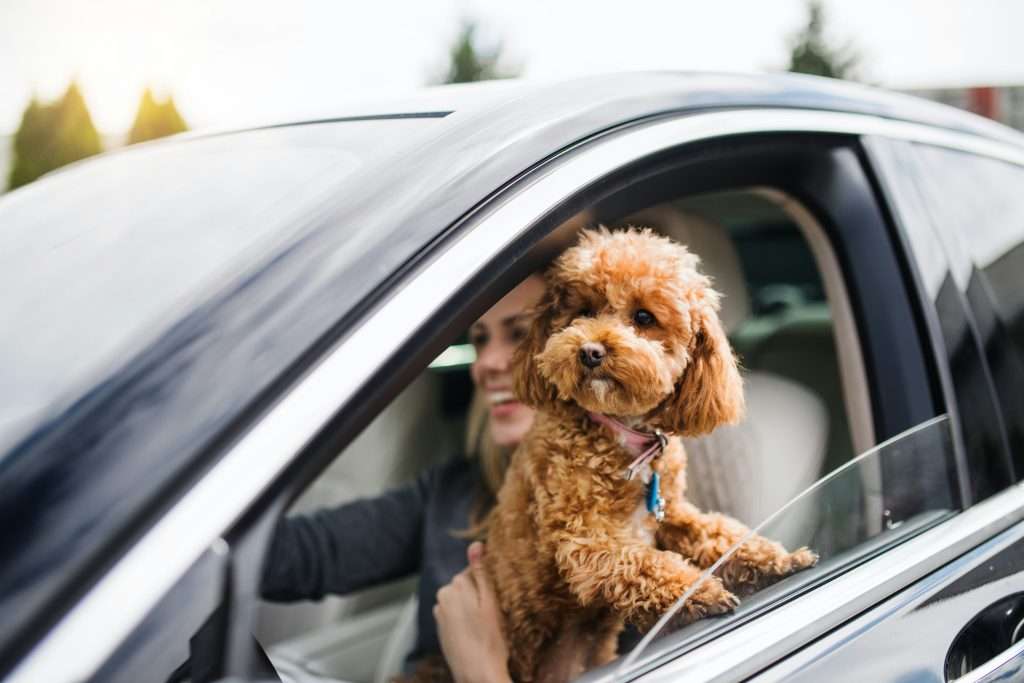
Poodle
The Labradoodle, a mix between a Poodle and a Labrador, combines intelligence and a friendly demeanor. Their unique coat is often less likely to shed, benefiting a clean home environment.
The golden retriever is another excellent choice. Known for their calm and friendly nature, they tend to form strong bonds with their family members, which can help children with autism feel secure and loved.
In summary, it’s important to match the dog’s characteristics with the individual’s needs. Picking a breed with a suitable temperament and energy level can make all the difference in creating a harmonious and supportive home environment.
Types of Support Dogs
Different types of support dogs offer various forms of assistance that can significantly improve the quality of life of individuals with autism. These dogs provide specialized help, emotional comfort, and therapeutic benefits.
Service Dogs
Service dogs receive extensive specialized training to carry out specific tasks that support their handlers. These dogs are legally permitted in public areas, such as malls, restaurants, and buses, making them invaluable for daily life.
Service dogs for autism often help with tasks like preventing self-harm or disruptive behaviors. They provide physical reassurance by applying deep pressure, which can calm anxiety. For example, they might lie across a person’s lap during a meltdown.
These dogs also help improve social interactions by bridging communication between their handlers and other people. If their handlers become overwhelmed, they can lead them to safe places.
Therapy Dogs
Therapy dogs provide emotional and psychological support to people other than their direct handlers. They often visit schools, hospitals, and therapy sessions to comfort people.
In schools, therapy dogs help children with autism by making the environment more relaxing and less stressful. Their presence can reduce anxiety and encourage interaction. For instance, children are more likely to engage in activities and communicate when a friendly dog is involved.
Therapy dogs are trained to be calm and patient, ensuring they can adapt to various settings. They help improve social skills and overall emotional well-being, benefiting not just the individual with autism but the broader community.
Emotional Support Dogs
Emotional support dogs offer companionship and comfort to those with mental health issues, such as anxiety or depression. Unlike service dogs, they don’t require specialized training or have the same legal access to public places.
These dogs provide a calming presence at home, which is particularly beneficial for people with autism who experience high-stress levels or sensory overload. Just petting or sitting with an emotional support dog can ease feelings of isolation and anxiety.
A mental health professional usually prescribes emotional support dogs, emphasizing their role in offering continuous emotional stability. They are perfect for families looking for an affectionate and comforting addition to their home.
Focusing on the right type of support dog can make a huge difference in the life of a person with autism. It can address their unique needs and make everyday experiences more manageable and enjoyable.
Training and Care for Autism Support Dogs
Training and care for autism support dogs involve specific strategies and routines. Consistency is critical to ensuring that these dogs are well-behaved and reliable companions.
Effective Training Strategies
Training autism support dogs requires patience and dedication. We need to start with basic obedience training, which includes commands like “sit,” “stay,” and “come.” These commands are crucial for safety and control, and consistency is essential, so everyone in the household should use the same commands.
Positive reinforcement works wonders. Rewarding good behavior with treats or praise helps the dog understand what is expected. We should avoid harsh punishments as they can create fear and anxiety.
Autism support dogs are often trained to respond to specific needs. For instance, some are trained to recognize and gently interrupt self-harming behaviors or help de-escalate an emotional meltdown. The training should be tailored to the individual’s unique needs, making the dog a reliable helper in various situations. Regular practice and refreshers ensure the dog remains sharp and responsive.
The Importance of Routine and Consistent Care
Routine and consistent care are essential for the well-being of autism support dogs. Establishing a daily routine helps the dog feel secure and reduces anxiety. This includes regular feeding times, exercise, and scheduled playtime.
Proper grooming is also a part of their care. Depending on the breed, regular brushing and bathing keep them clean and comfortable. For example, breeds like Golden Retrievers and Newfoundlands are known for their friendly nature and need regular grooming.
Routine veterinary check-ups are non-negotiable. Regular visits to the vet ensure the dog is healthy and up-to-date on vaccinations. Training and caring for an autism support dog is a big responsibility, but the rewards are immeasurable. These dogs provide more than support; they become integral to our lives.
Real-Life Impact of Dogs on Autism
Dogs significantly impact children with autism, aiding them in emotional, social, and practical areas of their lives. They help improve confidence and friendship and reduce symptoms of depression.
Case Studies and Research Insights
Research shows that autism service dogs can make a huge difference. Studies find that these dogs help children with autism spectrum disorders improve in areas like social confidence and interaction. For example, trained service dogs can recognize cues related to self-harmful behaviors and comfort their owners.
Children also learn essential responsibilities through caring for a dog. This teaches them practical and social skills that are vital for real-life situations. Service dogs can also assist with other developmental disorders, thus broadening their impact.
Personal Stories from Families
Real-life experiences highlight the positive changes dogs bring. Many families have noticed that their children’s emotional well-being has improved significantly. For instance, kids feel more secure and less anxious with a dog.
One specific story on Doggie Connect describes a family where the child increased his social skills and felt more confident while walking his dog. These stories show the power of a loyal family dog in making life more enjoyable and fulfilling for both the child and the entire family.
Additional Considerations for Choosing a Dog
Choosing the right dog involves considering both living conditions and financial and long-term commitments. We need to consider our environment and budget to ensure a good match.
Assessing the Living Environment
First, let’s look at our living space. Do we live in a house or an apartment? Space is key. Large breeds like Golden Retrievers need room to roam, while smaller dogs like Pugs are OK in tighter quarters.
Next, consider the routine. Are we ready for daily walks regardless of the weather? Dogs need a routine for exercise and bathroom breaks. If our lifestyle is more chaotic, a low-maintenance breed might be better.
Grooming and care are also factors. Some breeds shed a lot and need frequent brushing. Others might have specific grooming needs. Consider if we’re prepared to handle that.
Finally, think about our family. If we have small kids, we need a dog that’s good with children. A family dog that is gentle and patient can make a huge difference in how well the new pet integrates into our home.
Financial and Long-Term Commitments
Taking on a dog means a serious financial commitment. Start with the basics: food, vaccinations, and regular vet checks. These are ongoing costs. Special diets or medical needs can add up quickly.
Then there’s the initial expense of the dog itself. Some breeds can be expensive, especially if we look at highly trained support dogs. A therapy dog, for example, may be worth the investment but requires a significant upfront cost.
Long-term commitments can’t be overlooked. Dogs live many years; we need to be ready for that. Are we prepared for changes in our lives? Moving, new jobs, or family changes can impact our ability to care for a pet.
Finally, think about the unexpected. Vet bills for illnesses or injuries can be high. Consider investing in pet insurance to help manage these costs. Planning can prevent us from being caught off guard.
Choosing a dog is a big step. Let’s make sure we’re set for the journey!
Frequently Asked Questions
Let’s discuss some common questions about the best dogs for autism, focusing on the qualities, benefits, and suitable breeds.
What qualities make a dog a good companion for an autistic child?
The best dogs for autistic children are friendly, patient, and low-energy. They should be calm around children and not get easily stressed by noise or sudden movements. Breeds like Labrador Retrievers and Golden Retrievers are often recommended as they are well-known for their gentle nature.
How do therapy dogs assist in developing social skills for individuals with autism?
Therapy dogs help people with autism feel more comfortable in social situations. They act as a bridge, making it easier for individuals to interact with others. For example, walking a dog or playing at the park can encourage social interactions and make conversations more natural.
What are the physical benefits of having a dog for a child on the autism spectrum?
Dogs encourage physical activity, which helps with overall health. Activities like walking, running, or playing fetch improve fine and gross motor skills. A child can enhance their coordination and physical fitness by playing with their canine buddy.
Which dog breeds are most suitable for providing comfort to adults with autism?
Labradors, Golden Retrievers, and even Newfoundlands are excellent choices. They are known for being friendly, intelligent, and easy to train. These dogs are great for anyone needing a loyal, comforting companion.
Can a service dog be beneficial for managing anxiety in individuals with autism, and how?
Yes, service dogs can significantly help with anxiety. They are trained to provide calming pressure during stressful events. For instance, if someone with autism feels overwhelmed, the dog can lie across their lap, applying deep pressure that helps soothe and calm them down.
What should families of children with autism and allergies consider when selecting a dog?
Families should look for hypoallergenic breeds like Labradoodles. These dogs are a mix of Poodles and Labradors and are known for producing less dander. This can be a game-changer for kids with allergies who can still enjoy the companionship of a loving dog without the constant sneezing or itchy eyes.
Each of these questions touches on different aspects of how dogs can support autistic individuals, highlighting their substantial benefits to children and adults.

